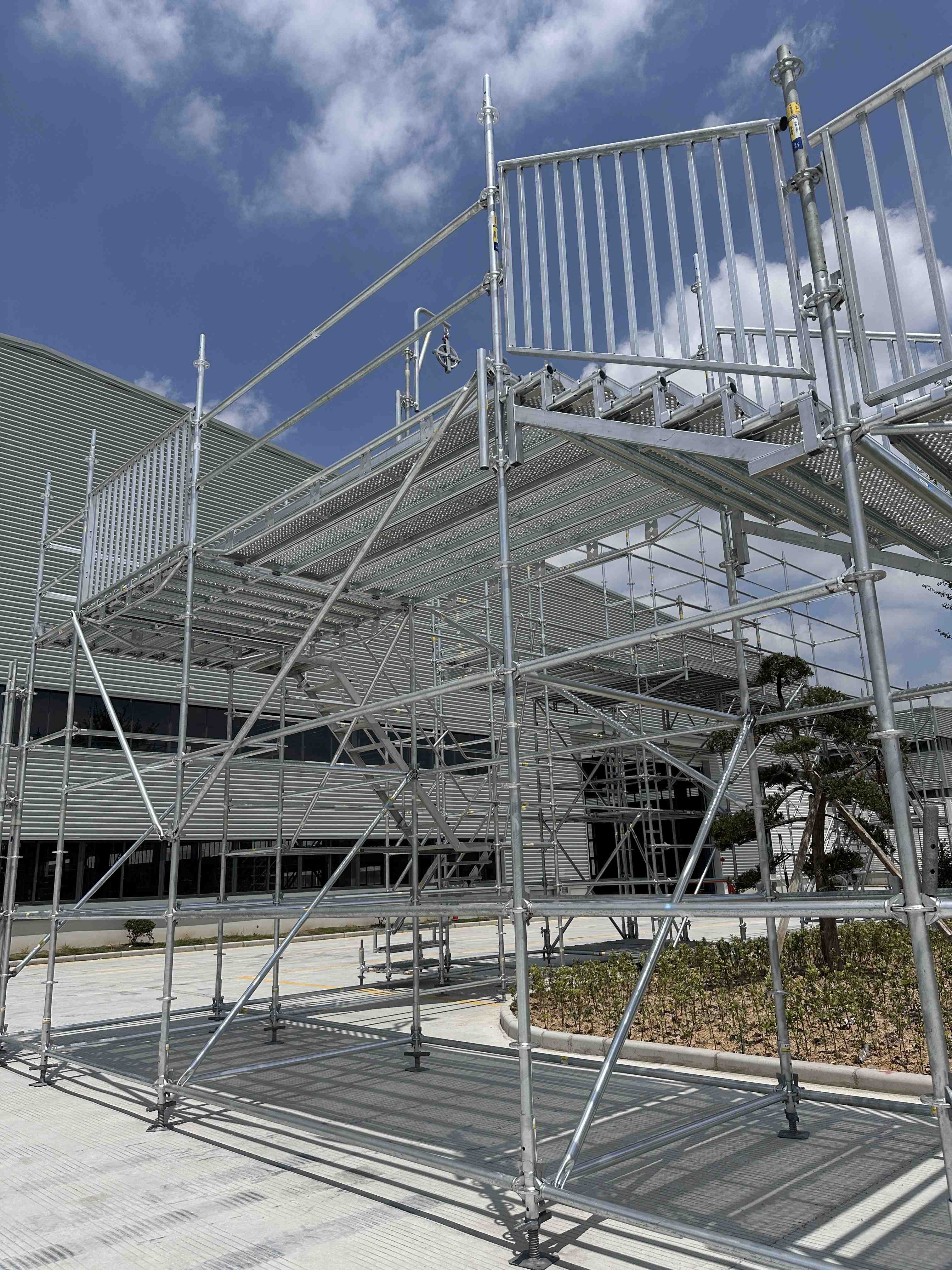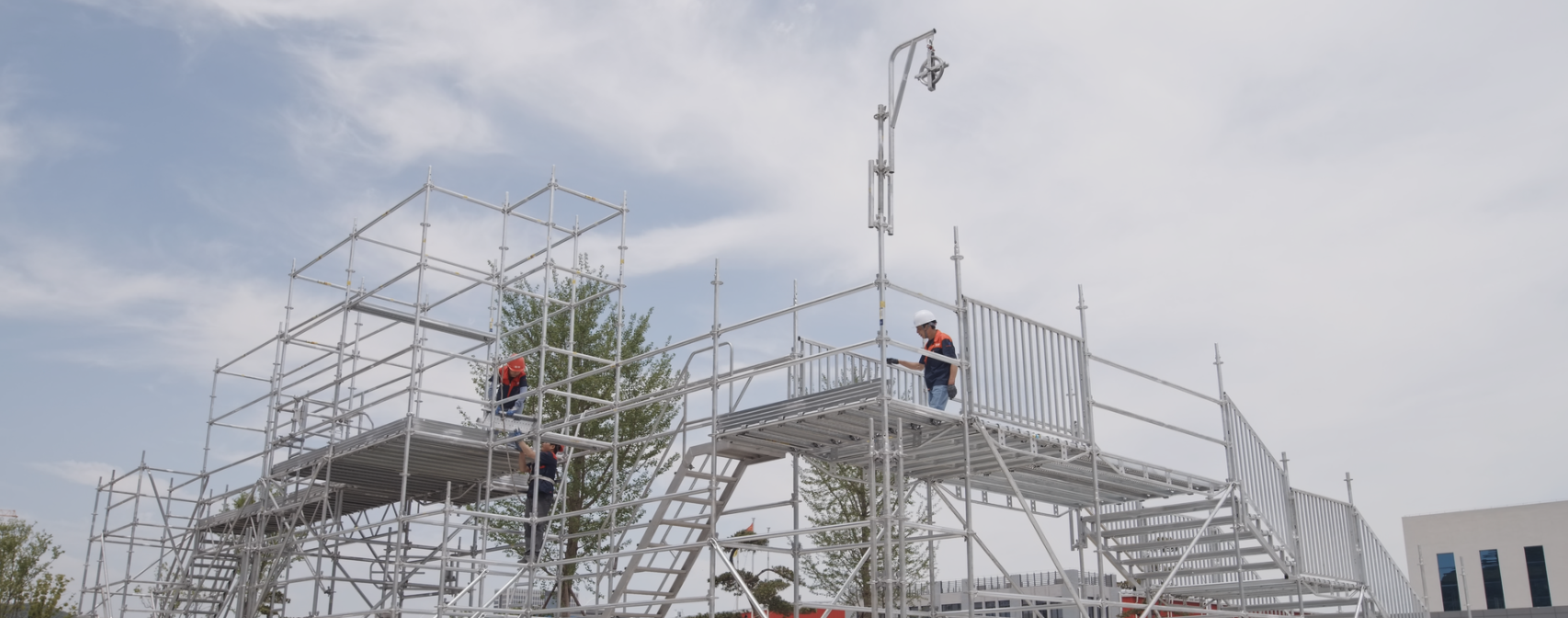
Scaffolding Planks: Don't Let Price Fool You — A Buyer's Guide
Scaffolding Planks: Don't Let Price Fool You — A Buyer's Guide
When buying scaffolding planks, it's tempting to go for the cheapest option. After all, they might look the same — but inside, they're not. In construction, the wrong choice doesn't just waste money — it risks safety, delays, and long-term damage.
In this guide, we break down the key differences that separate low-cost planks from truly reliable ones — so you can make informed, cost-effective decisions with confidence.Let's look at these critical areas that drive the price — and safety — of scaffold planks:
Steel vs Aluminium: What Buyers Should Know About Material Choice
Both steel and aluminium planks are used in Ringlock scaffolding systems, but they serve different purposes.
Aluminium planks are lighter and easier to handle, which makes them ideal for short-term or low-load applications — especially where frequent movement or manual handling is required. However, under heavy load or rough use, they can bend — or even fail — putting workers and project timelines at risk.
Steel planks, especially when properly galvanized, offer significantly higher strength and durability. They're better suited for long-term, heavy-duty use on construction sites where safety, stability, and lifespan matter most.
If your project involves high loads, rough conditions, or extended use, steel remains the more reliable and cost-effective choice.
Buying Tip: For heavy-duty or long-term construction, always choose steel planks over aluminium to ensure strength and safety.
Aluminium plank vs Steel plank
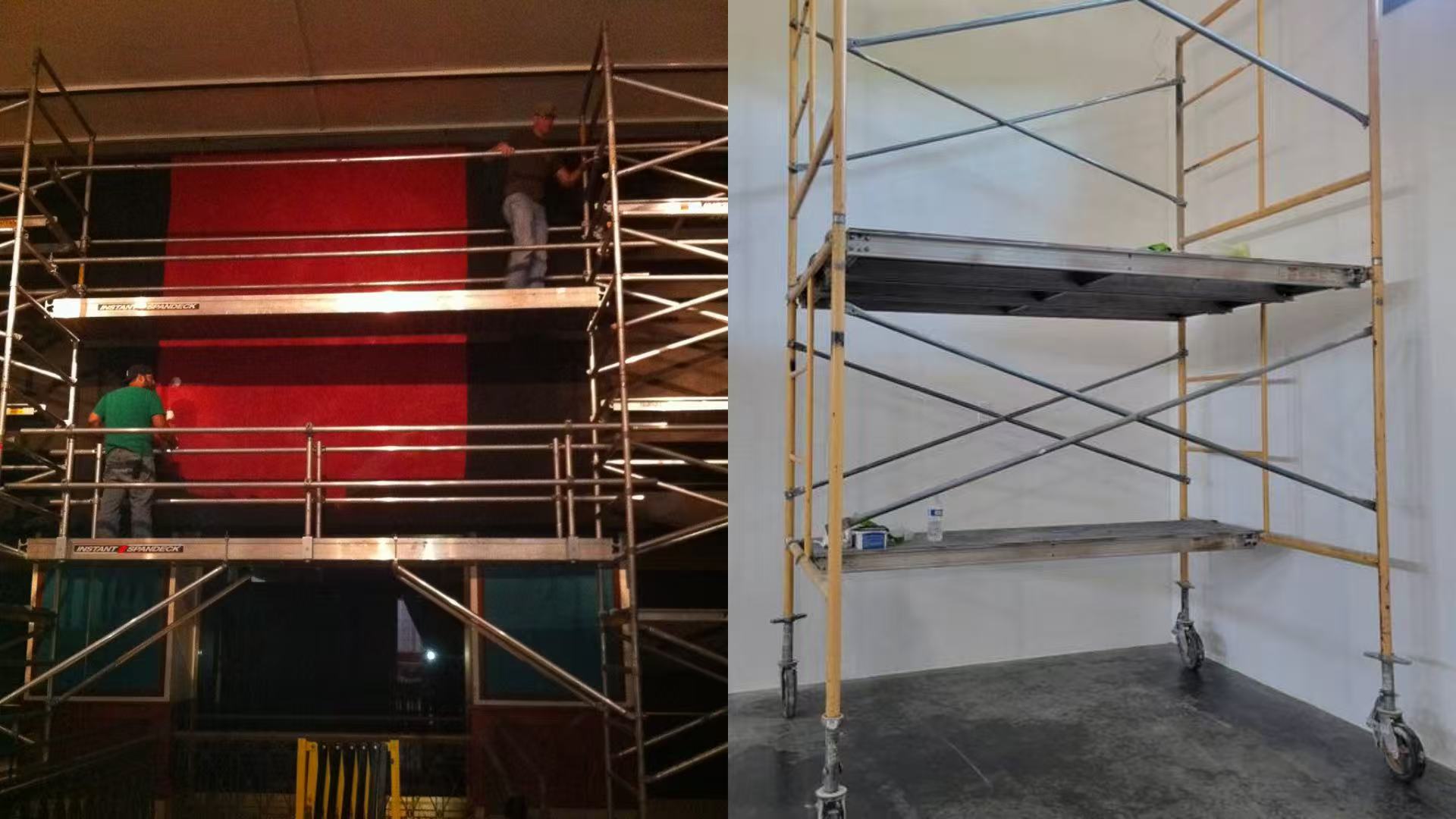
Aluminium planks in use on indoor projects
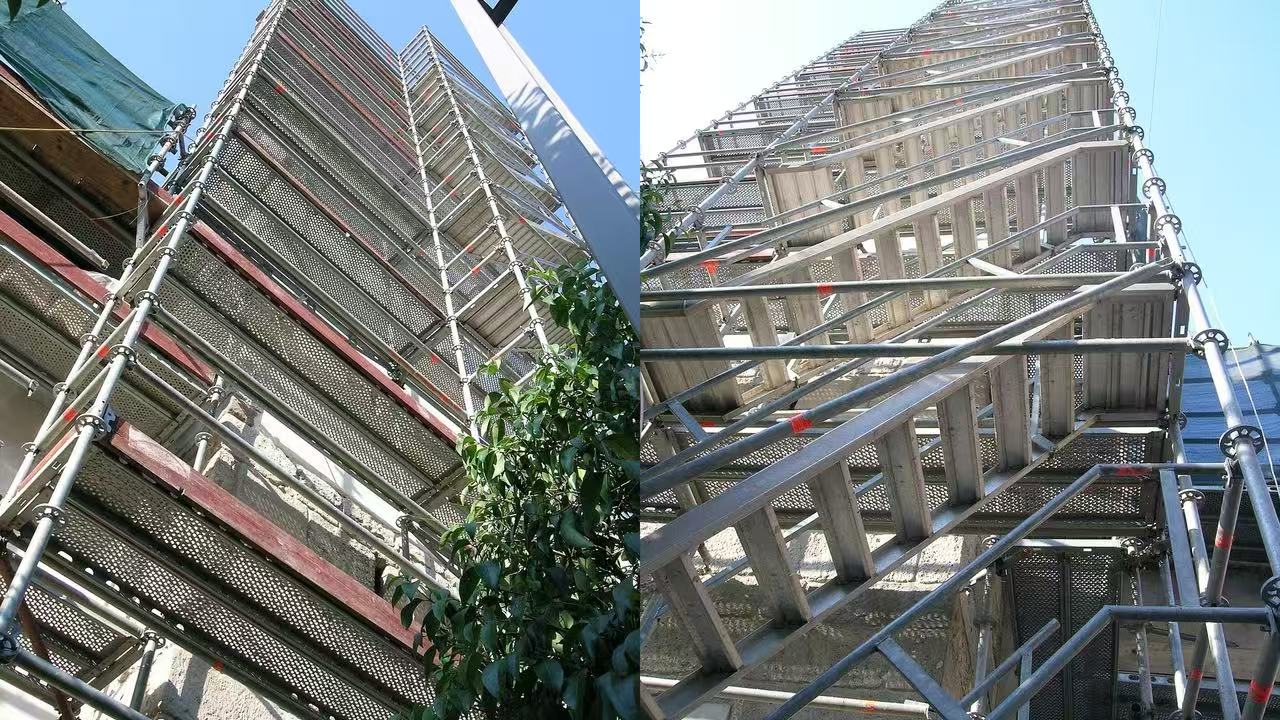
The Difference Between Pre-Galvanized and Hot-Dip Galvanized Coatings
Galvanizing protects steel from corrosion, but not all methods offer the same level of protection.
Pre-galvanized planks are made from galvanized coils. After welding and cutting, exposed edges and joints are more prone to rust due to incomplete coating. While they are suitable for indoor or short-term outdoor use, they offer limited corrosion resistance in harsh or long-term conditions.
Hot-dip galvanized planks are fully immersed in molten zinc after fabrication, coating every surface, edge, and weld. This process gives them much longer lifespan, especially outdoors or in humid environments.
If your scaffolding will be used outdoors or stored on site, hot-dip galvanizing is essential for long-term reliability.
Buying Tip: If your project involves outdoor or long-term use, always choose hot-dip galvanized steel — it's worth the higher upfront cost.
Pre-galvanized vs Hot-dip galvanized
Differences in Steel Materials Used for Planks
The grade of steel directly affects the plank's strength, structural integrity, and resistance to bending.

At HJ Scaffolding, we use S235JRH, a European-standard steel known for its impact resistance and uniform quality — ideal for high-load Ringlock applications.
Buying Tip: Look for planks made from structural-grade steel like S235JRH for better load performance and safety compliance.
How Thickness Affects Plank Performance and Price
Steel thickness is another major factor in durability and load-bearing ability.
1.2mm planks are often used for budget or temporary projects but tend to deform more easily.
1.5mm is the industry standard for regular usage, balancing cost and strength.
1.7mm offers the best performance for demanding or long-term installations — with increased rigidity, longer lifespan, and better resistance to impact or fatigue.
Don't underestimate the extra 0.2mm — it could be the difference between a safe platform and a costly collapse.
Buying Tip: Choose 1.7mm planks if your job site demands higher impact resistance and longer service life.

Indoor vs Outdoor Use: Why It Changes Everything
Where you plan to use your planks matters.
Planks for indoor use don't require the same corrosion resistance and may use thinner steel or lighter coatings. That reduces cost, but also durability.
For outdoor use, especially on long-term projects, thicker steel and hot-dip galvanizing are critical to withstand moisture, temperature changes, and rough site handling. Using indoor-grade planks outdoors often leads to premature rusting or deformation — and potentially unsafe working conditions.
Buying Tip: Never use indoor-grade planks for outdoor projects — always check coating and steel thickness to match the environment.
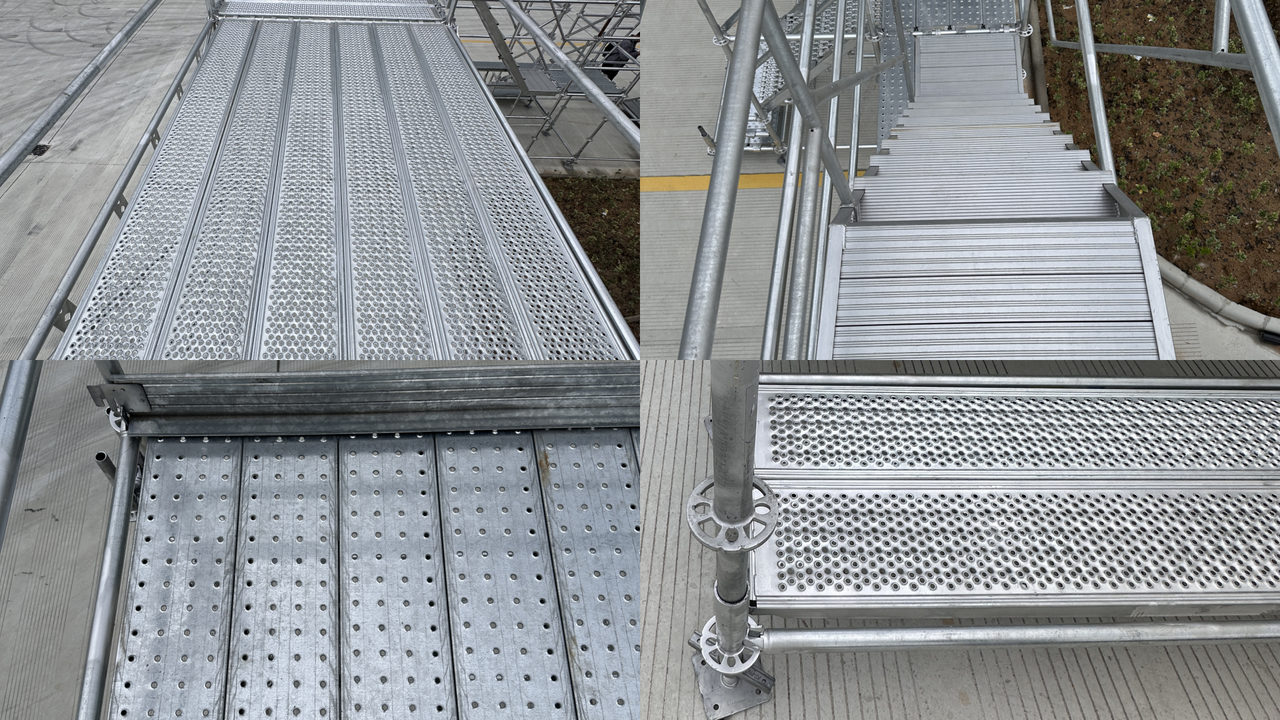
Why Our Steel Planks Cost More — And Why They're Worth It
At HJ Scaffolding, we manufacture Ringlock scaffold planks using:
S235JRH structural steel
1.7mm standard thickness
Full hot-dip galvanizing (inside and out)
These specs ensure long-term durability, resistance to deformation, and compliance with international standards including ISO 9001, EN 1090, and DASt 022.
We don't cut corners — and neither should you when safety and long-term performance matter.
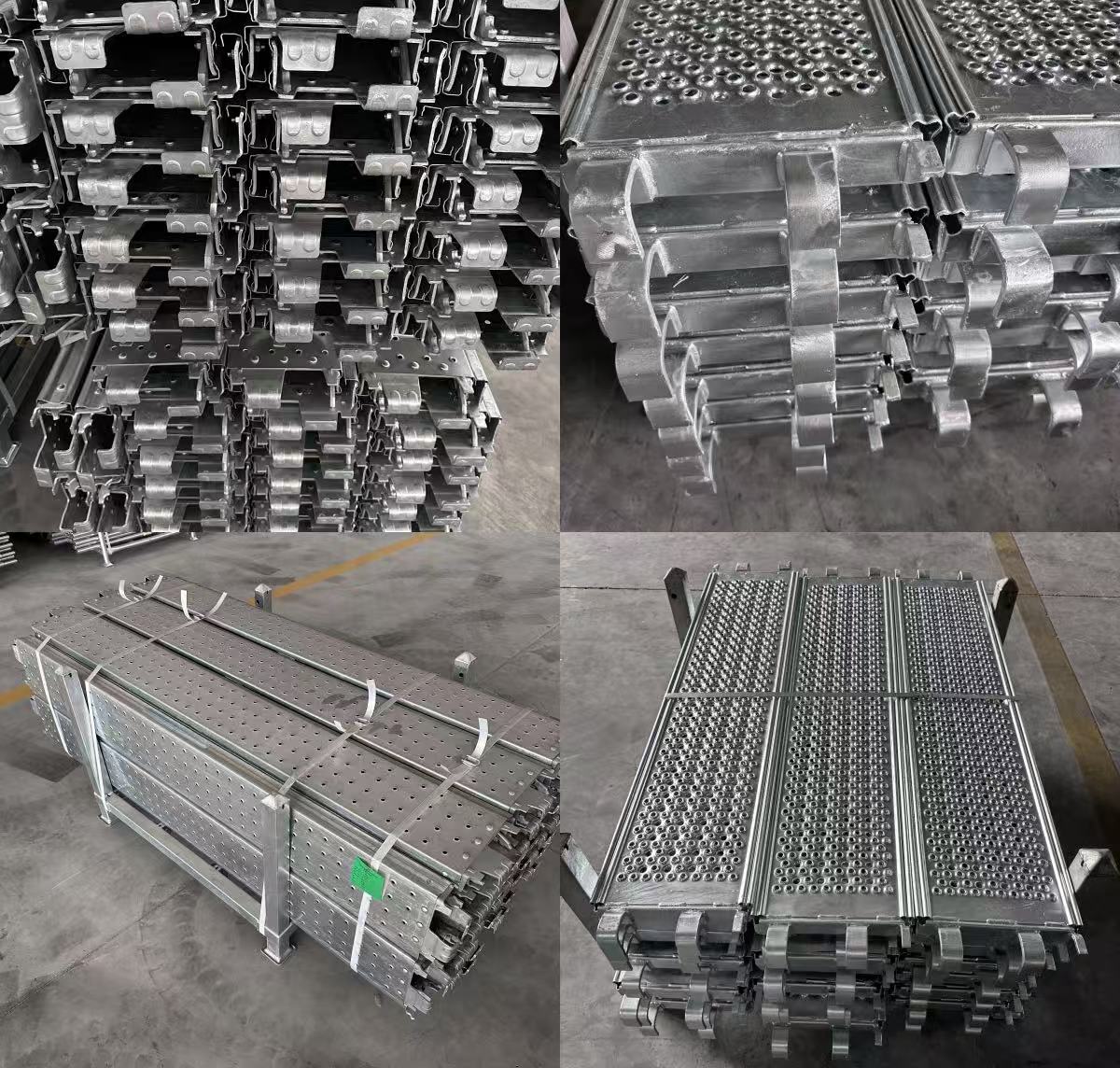
HJ steel plank for Ringlock scaffolding
Final Thoughts
When it comes to scaffolding planks, cutting costs often means cutting corners — in safety, durability, and long-term value.
At HJ Scaffolding, we help buyers worldwide choose the right plank for the right job — backed by certified quality and reliable service.
Still not sure which type fits your project? Contact us for a tailored recommendation.
E-mail: lynn.li@hj-scaffolding.com
WhatsApp: +86 15058750031
